Vishu celebrated in Medam – How is it related to Njattuvela and crop harvest?
Vishu season arrives every summer giving messages of prosperity and happiness. Malayalis celebrate New Year on Medam 1st through Vishu Kani in the dawn break, offered to Lord Krishna and prays for a great year of prosperity ahead. Yet Malayalis own calendar Kollavarsham starts in Chingam in mid-August. Though mid-April is regarded as year beginning by Malayalis, there are a few reasons why Malayalis’ calendar is different from actual New Year, a season when the whole India and neighbouring nations celebrate New Year in mid-April. Then why so? For that let’s know more about Vishu, a celebration originated about 1,654 years back. Read more: How Vishu is celebrated?
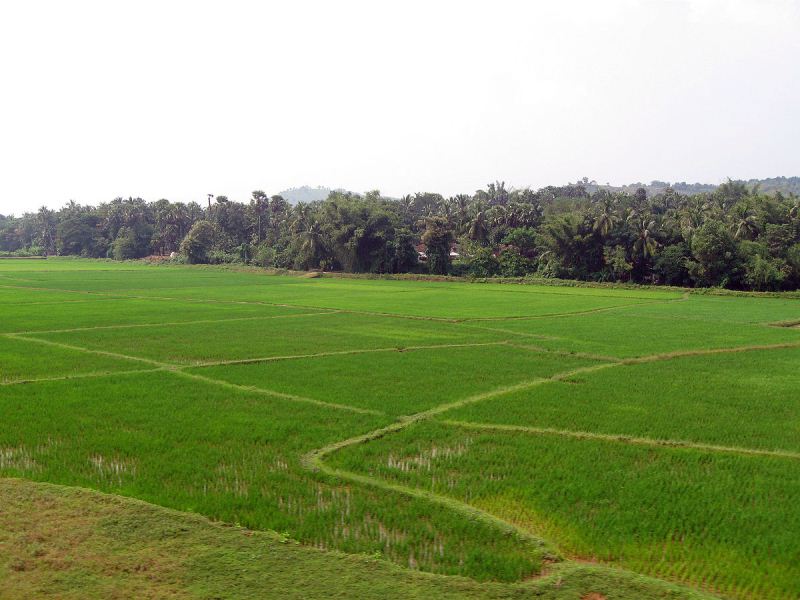
Green Paddy Fields of Kerala
Vishuva Bindu and Rekha
Vishuva Rekha is an imaginary line as per ancient Indian astrological science, quite similar to longitude and latitude of modern times. There is a concept of two Vishuva bindus related to Medam Vishu and Thulam Vishu. An imaginary line connecting these two points (bindu) is called Vishuva Rekha. From Meenam Rasi, Sun travels through Vishuva Rekha to reach Medam Rasi. This technique has been followed in astrology since early days to categorize star signs (nakshatra rasi).
Why Vishu is connected to Medam month?
Our ancestors have divided sun’s journey to 12 segments, and each segment has been given the name rasi (constellation). Malayalam month is determined in accordance to sun’s entry to each constellation. When sun reaches Medam rasi, Medam month begins. Then it continues till Idavam, Midhunam, Karkidakam etc till it reaches Meenam. The day when sun passes from Meenam to Medam (Medam 1st) is celebrated as Vishu.
Beginning of an agricultural year

Vishu is regarded as Karshika Varsharambam (beginning of cultivation year) and Chingam 1st is beginning of Kollavarsham for Malayalis. Centuries back, Vishu was celebrated as New Year, but later got changed. In 825 AD, in a conference of scientists held at Kollam of old Travancore, it was decided that Chingam 1st will be observed as the year beginning for Keralities. As the New Year was commenced at Kollam, Malayalis’ new calendar got the name, Kollavarsham. This conference of the scholars was called by Udaya Marthanda Varma, ruler of Travancore.
Changes in the social life and complexities of Malayalis are included in the new calendar. When man led a simple life, a simple New Year with Medam 1st as the first day of the year was sufficient. When the life style of man improved, Vishu couldn’t be considered as New Year beginning. That’s why a new calendar Kollavarsham came into existence, which incorporated the life style and social life too.
Sayanam and Nirayanam
The word Vishu was coined from Vishuvam. But Vishu and Vishuvam are not the same. Vishuvam (Equinox in English) means duration of day time and night time are same, and Vishu and Vishuvam never fall on the same day due to some reasons. It’s based on two methods used in astrological calculations.
According to Sayanam principle, Medam month should be calculated in accordance to Vishuvam which falls on March 21. But our Panchangam and different calendars of our nation uses Nirayanam principle to calculate year, month etc. When you look towards sky from earth, Kranti Vritham, the circular path through which planets and stars move is a big imaginary circle drawn. There is different in opinions about the starting point of this imaginary path, and that’s why there is a difference between Sayanam and Nirayanam for astrological calculations.
Njattuvela and Vishu festival
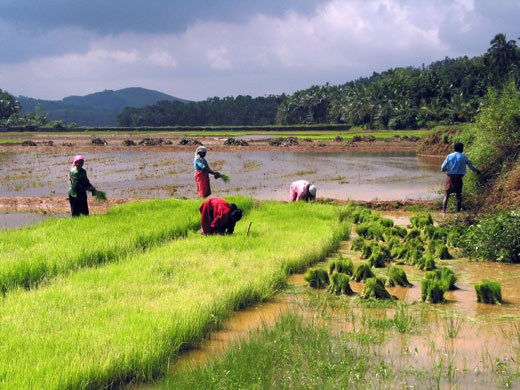
Green fields for cultivation
Njattuvela means ‘Vela of Njayar’, which literally means journey of sun. The universe consists of crores of stars, and astrologers divided them to 27 different regions or clusters, and gave a name to each constellation like Aswathi, Bharani etc. The time when sun is present in a particular cluster of stars is called a single Njattuvela. When sun is visible in Aswathi cluster, it’s known as Aswathi Njattuvela, and it continues to 27 clusters one after one till sun reaches the same position, and the cycle continues. Each Njattuvela is approximately 13-14 days. Once sun completes 27 Njattuvela, one year will also ends.
Our ancestors predicted summer, winter, rain etc based on Njattuvela, and hence known to be the primitive form of present climatic predictions. In short it was a scientific method to calculate seasons long before modern systems came into existence. Farmers used to sow seeds and harvest crops based on these predictions done.
There were separate Njattuvelas for sowing seeds among our ancestors. Peas in Rohini Njattuvela, Pepper in Thiruvathira Njattuvela, Banana in Atham Njattuvela etc to mention a few. Rain is available in plenty during Thiruvathira Njattuvela and some of proverbs are also associated Njattuvela which brings the memories of old days back; ‘Thiruvathirayil Thirimuriyathe’, ‘Punartham Pukanja Pole’, ‘Chothi Peythaal Chorurachu’ etc to mention a few.
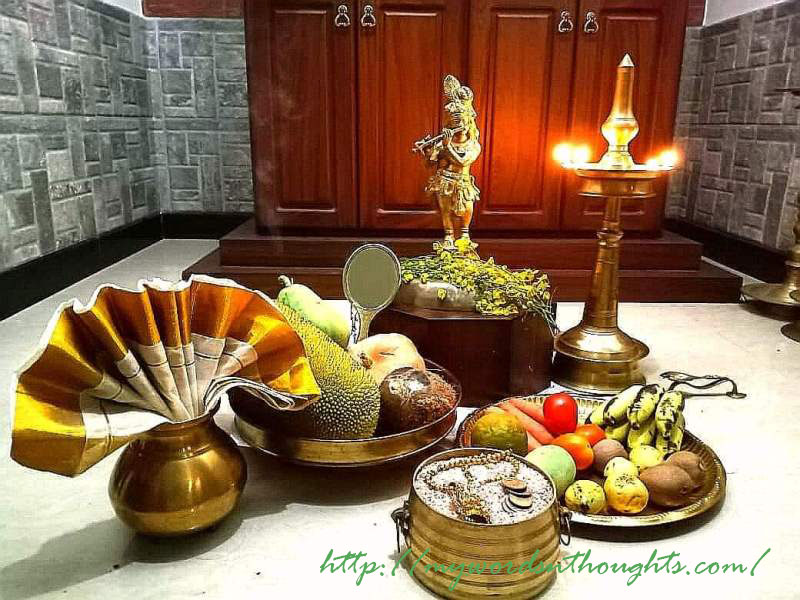
Vishu arrives on the first Njattuvela – Aswathy Njattuvela, when seeds are sown to start cultivation. Not only farming, local festivals were also celebrated based on Njattuvelas.


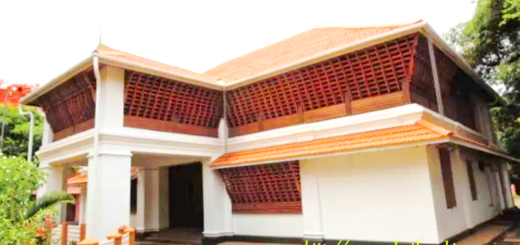










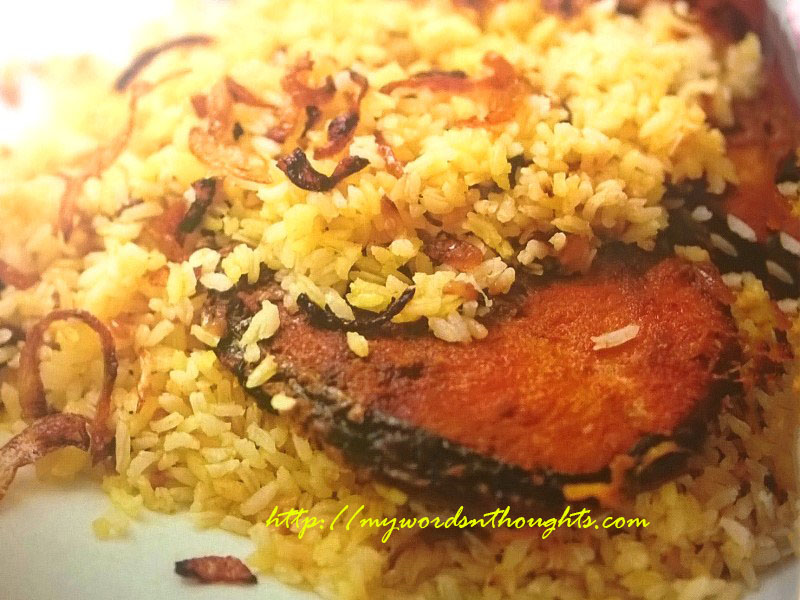
Wherever the word Malayalam is used- replace that word with Tamil.. then the article will reveal exactly the practice in the tradition of Tamils.
It is nothing – the So called intellectuals invaded Old Tamil land of Cheras and wanted to break the prosperity of that ancient Tamil country for creating their own supremacy over that cultured land… their Tantric intelligence was able to produce Manipravalam… -> Malayalam and so on and found the way to create slight differences between the people of malayalam (land of mountains) and people of Pandi Naadu (Tamils). In that series of intellectual creations NewYear faith of Medam also replaced to Cingam. The word malayalam denotes “the land of hills” in ancient Tamil not a language as intercepted by the intellectual creaters of Malayalam as a language. Even now the tribes of some hilly regions of western parts of Tamilnadu are called “Malayalis” since they inhabit in malayalam (land of mountains).
Nice to know, a new piece of info for me, thank you